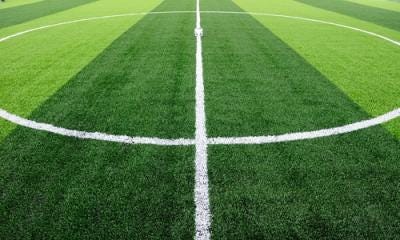Comparing: Different Terrains -Level Fields
The Art of War 9:21-26 On a level plateau, take a position that you can change
This post continues our project explaining each stanza of Sun Tzu’s work. The English and Chinese quotes are from my award-winning translation, The Art of War and The Ancient Chinese Revealed. Basic translations are written from the narrow perspective of opposing armies. These articles focus on the more general application of this philosophy to all competition. Start here for the book’s opening lines.
The lessons examined in this article are from Section One of Chapter 9 of The Art of War. This chapter is entitled Armed March. Its general topic is competitive moves that advance our positions. It is one of the longest and most detailed chapters of the book.
The first section of this chapter describes the four different types of terrain in which we may face competition in making our moves. In previous, more detailed articles, we looked at the terrains of mountains/water and water/marshes. This article looks at “level ground” or, more accurately, a high plateau.
In the lines below, we summarize the Chinese characters in their original order, each with a single English word shown in < > brackets. This transliteration of the Chinese is followed by an English sentence translation.
The High Plateau
On the level ground of a high plateau, we do not have to worry about the force of gravity(mountains), currents of change(water), or our uncertain footing(marshes). On plateaus, the main issue is visibility, seeing the obstacles can block our future progress in certain directions.
<Level> <plateau> <position> <change>
On a level plateau, take a position that you can change.
In being compared to opponents on a level playing field, people prefer to support those with the most options. Our movement options are determined by the empty space around us. This space gives us more directions in which we can advance and avoid confrontations. Competition is comparison. The only way we can advance our positions in the minds of others is to win these comparisons.
In evaluating us on level ground, people evaluate our leadership in choosing our positions for future movement. Our ability to see the big picture, gives us the ability to choose places with the most options.
<Right> <back> <high>
Keep the higher ground on your right and to the rear.
In these situations, we want to see and be seen. While the plateau is relatively flat, it is not perfectly level. Let us call it “rolling” terrain with gradual changes from lower places to higher ones. Its “hills” offer visibility. We are looking for positions that give us the best overview of the whole area. These positions exist in every terrain, but they are the most important on plateaus.
Higher positions also allow us to be seen. We must work to be seen by others. By making our positions visible, we are able to show-off our strengths. In society, it is the judgements of others that are important. We want people to support us and not oppose us. We want to show others why conflict with us would be costs so that we can avoid it.
<Front> <die> <behind> <born>
Keep danger in front of you and safety behind.
All moves are explorations. From goods positions on the high plateau, we can observe the difficulties around us. The three costly aspects of ground are dangers, distance, and obstacles. On level terrain, all of these are more visible when we position ourselves where we can see them.
Distance can also be seen, but it takes skill to judge distance precisely. The space of distance can be an advantage if we are staking out permanent positions. Distance isn’t necessarily empty areas that create the openings that can be an opportunity, but distance provide room for openings.
<Here> <position> <level> <plateau> <of> <army> <also>
This is how you position yourself on a level plateau.
These level plateaus are good places to stake out more permanent positions as well. Their <towns> here can make a good starting place for building up productive positions and a clear sign that they offered rewards in the past. The visibility of plateaus may allow us to spot an opening which will produce rewards. Plateaus are good ground for movement, but it can make it too easy to move past its opportunities.
Freedom of Choice
We can safely move through or into any of these types of terrains when pursing an advance or extension of our positions.
<All> <here> <four> <army> <’s> <advantage>
You can find an advantage in all four of these situations.
The four terrains of mountains, water, marshes, and level ground offer respectively gravity, current, uncertainty, and visibility. All of these can be an advantage when we know how position ourselves to use them. However, they can all be problems if we don’t.
<Yellow> <emperor> <’s> <place> <by> <means> <of> <victory><four> <emperor> <also<
Learn from the great emperor who used positioning to conquer his four rivals.
The yellow emperor was a semi-mythical ruler existing several thousand years before Sun Tzu. He is attributed with all types of new inventions including the compass. China, during his lifetime, was even more divided than it was during Sun Tzu’s. The yellow emperor was involved in a number of battles with other rulers. Other rulers also came to him for aid. These stories are the kinds of historical lessons from which Sun Tzu developed his strategy guide. It is not clear who the four emperors mentioned here were, but I suspect that one of their realms was in the mountains, another among the lakes, the third in the marshes, and one on a plateau.



